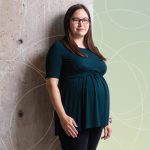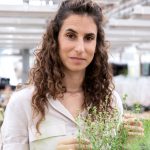Gratitude Thank you to our generous supporters
In April, Hess Corporation announced a $50 million donation to the Salk Institute’s Campaign for Discovery: The Power of Science. This gift will specifically advance Salk’s Harnessing Plants Initiative—an effort to mitigate climate change by optimizing plants and supporting wetlands to increase capture of excess atmospheric carbon—and provide vital infrastructure for this work by establishing the new Hess Center for Plant Science.
The Hess Corporation gift will be dispersed over five years to support faculty recruitment and laboratory and research operations for the Harnessing Plants Initiative, as well as to create and endow the Hess Center for Plant Science, where Harnessing Plants Initiative scientists will work within the future Joan and Irwin Jacobs Science and Technology Center building.
“Salk experts are making impactful discoveries on a regular basis, combining genetics, epigenetics, computational biology, and other disciplines to understand how a plant’s genes determine the way a plant grows in an everchanging environment. When these scientists find they need technology that doesn’t yet exist, they often build it themselves,” says Salk President Gerald Joyce. “This gift will certainly accelerate the bold work being done by our talented group of plant scientists. We deeply appreciate the Hess Corporation for their continued generosity and partnership.”
HARNESSING PLANTS INITIATIVE
Salk’s Harnessing Plants Initiative is led by Professor Joanne Chory, founding director, Howard H. and Maryam R. Newman Chair in Plant Biology, and Howard Hughes Medical Institute investigator, as well as Professor Wolfgang Busch, executive director and Hess Chair in Plant Science. Other faculty members include Joseph Ecker, Julie Law, Todd Michael, and Joseph Noel. The initiative comprises two projects aimed at mitigating climate change: (1) CO2 Removal on a Planetary Scale, in which scientists are developing Salk Ideal Plants® to capture potentially billions of tons of atmospheric carbon and store it in broader and deeper roots rich in molecules such as suberin, and (2) Coastal Plant Restoration, in which scientists are identifying and restoring wetland plants that retain carbon, purify water, preserve land, and thrive in challenging environments around the world.
In 2020, the Salk Institute received a $12.5 million gift from Hess Corporation to accelerate the development of plant-based carbon capture and storage. Since then, the Harnessing Plants Initiative team has made numerous advances in enhancing desired plant traits, including deeper rooting and the ability to sequester carbon, and is rapidly scaling its discoveries from laboratory to greenhouse to field trials. In 2021, Hess donated $3 million to establish the endowed Hess Chair in Plant Science at Salk.
“We believe this groundbreaking work will implement scientific breakthroughs on a global scale and can make a major contribution toward achieving the world’s ambition to reach net-zero emissions.”
–John Hess, Hess Corporation Chief Executive Officer
HESS CENTER FOR PLANT SCIENCE IN THE JOAN AND IRWIN JACOBS SCIENCE AND TECHNOLOGY CENTER
As part of the Campaign for Discovery, Salk will build the 100,000-square-foot Jacobs Center on the east side of the Institute’s campus. The facility will provide much-needed research and support space to advance and expand the Institute’s scientific mission, in keeping with founder Jonas Salk’s vision of flexible and functional design.
The Jacobs Center will be home to four Centers of Excellence, including the Hess Center for Plant Science. The new facility will provide the Harnessing Plants Initiative team with more opportunities for interdisciplinary collaboration and the ability to leverage leading-edge technologies in computational biology.
“The Harnessing Plants Initiative is a potential game changer in tackling the global challenge of climate change,” says Hess Corporation Chief Executive Officer John Hess. “We are honored to support this innovative research led by Harnessing Plants Initiative leaders Joanne Chory and Wolfgang Busch. We believe this groundbreaking work will implement scientific breakthroughs on a global scale and can make a major contribution toward achieving the world’s ambition to reach net-zero emissions.”
Support a legacy where cures begin.
Featured Stories
 Leading with Technology – Salk scientists develop new means of discoveryOur scientists continue to push technological limits to—among other things—store more excess atmospheric carbon in deeper plant roots, study pancreatic cancer more accurately, follow cellular activity in real time more clearly, and track all kinds of motion more easily.
Leading with Technology – Salk scientists develop new means of discoveryOur scientists continue to push technological limits to—among other things—store more excess atmospheric carbon in deeper plant roots, study pancreatic cancer more accurately, follow cellular activity in real time more clearly, and track all kinds of motion more easily. Dannielle Engle—Putting patients firstEngle, an assistant professor, has a deeply personal connection to pancreatic cancer that changed her career trajectory and made her want to focus on the disease. Inside Salk sat down with Engle to find out more about her dedication to finding better treatment options.
Dannielle Engle—Putting patients firstEngle, an assistant professor, has a deeply personal connection to pancreatic cancer that changed her career trajectory and made her want to focus on the disease. Inside Salk sat down with Engle to find out more about her dedication to finding better treatment options.
 Weiwei Fan—Life is energyFan, a staff scientist in Professor Ronald Evans’ lab, studies mitochondria because he feels drawn to understanding how these energy generators within our cells function and the natural variations that exist between individuals.
Weiwei Fan—Life is energyFan, a staff scientist in Professor Ronald Evans’ lab, studies mitochondria because he feels drawn to understanding how these energy generators within our cells function and the natural variations that exist between individuals. Natanella Illouz-Eliaz—Recipe for a plant biologist: tomatoes, failure, and perseveranceIllouz-Eliaz, a postdoctoral researcher in Professor Joseph Ecker’s lab, grew up in Israel near the border with Lebanon, where high-pitched sirens periodically drove her family into bomb shelters for safety. But her parents insisted that she get the best education possible.
Natanella Illouz-Eliaz—Recipe for a plant biologist: tomatoes, failure, and perseveranceIllouz-Eliaz, a postdoctoral researcher in Professor Joseph Ecker’s lab, grew up in Israel near the border with Lebanon, where high-pitched sirens periodically drove her family into bomb shelters for safety. But her parents insisted that she get the best education possible. Richard Heyman—From Salk to biotech and backHeyman, a scientist and entrepreneur who has founded numerous biotechnology companies, currently serves as vice chair of Salk’s Board of Trustees, but his Salk story actually began when he was a postdoctoral researcher in the lab of Professor Ronald Evans.
Richard Heyman—From Salk to biotech and backHeyman, a scientist and entrepreneur who has founded numerous biotechnology companies, currently serves as vice chair of Salk’s Board of Trustees, but his Salk story actually began when he was a postdoctoral researcher in the lab of Professor Ronald Evans.




















































